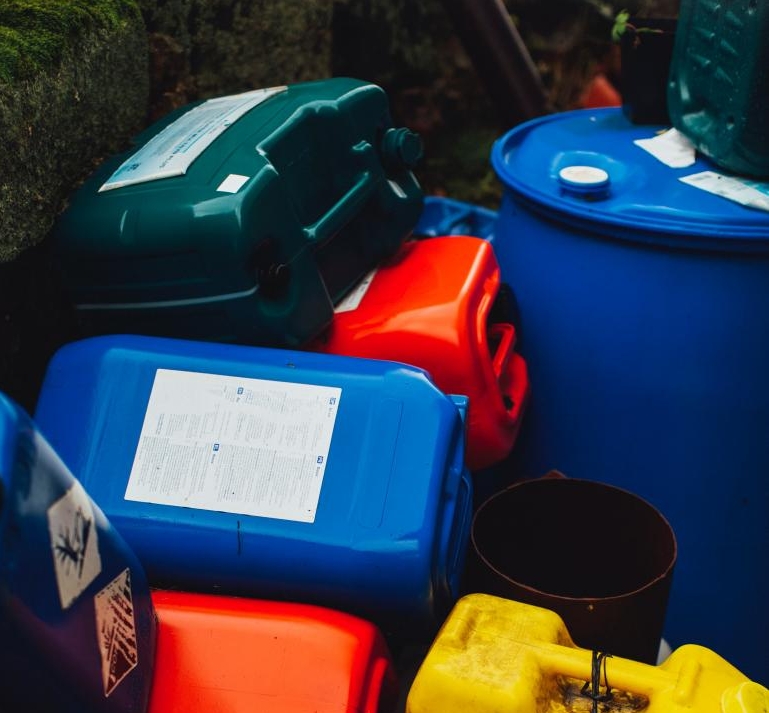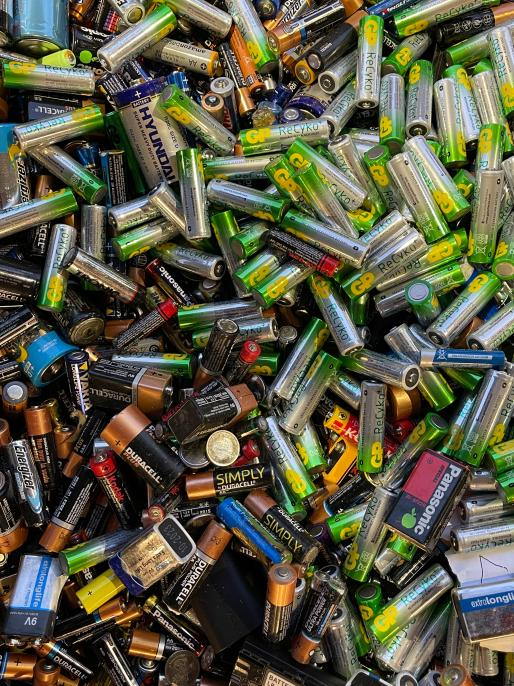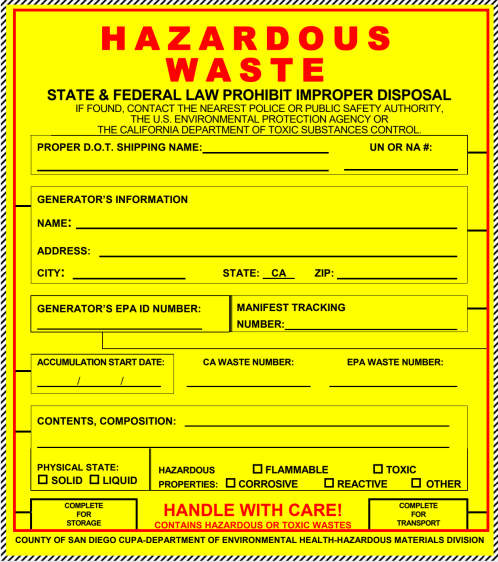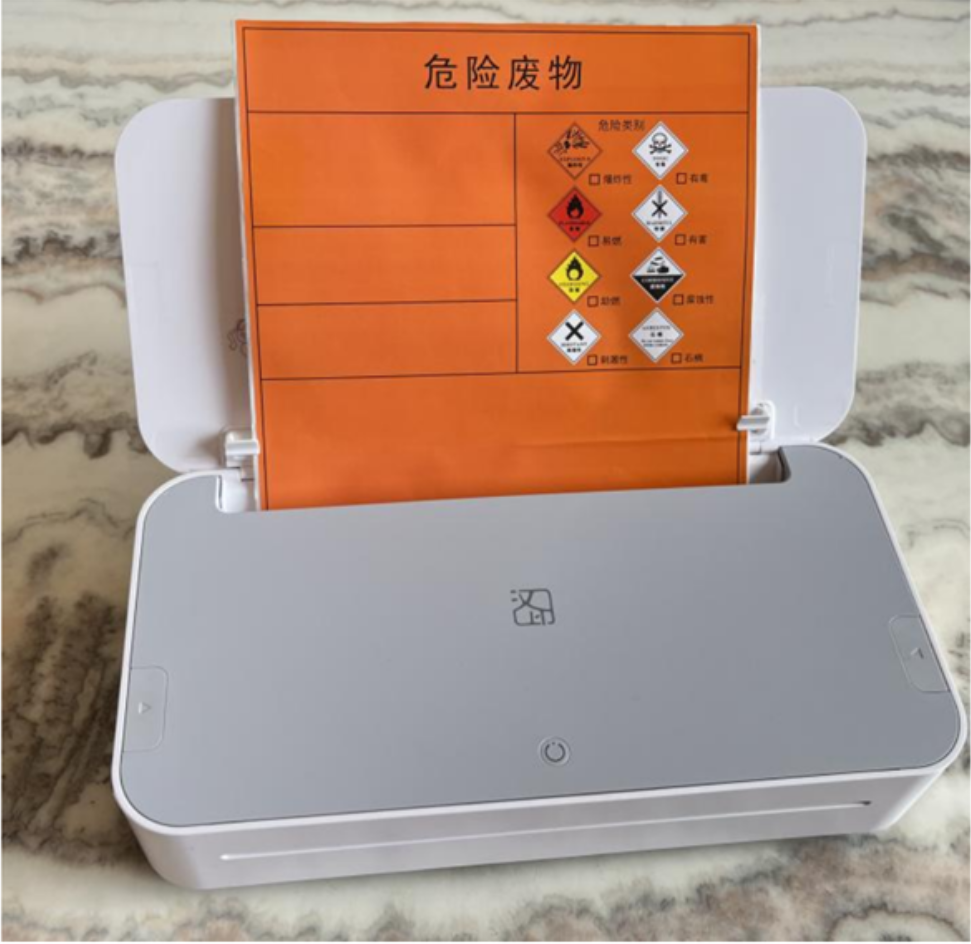Guide to Hazardous Waste Label Requirements and Printing Practices
2024-01-02 16:47
Hazardous waste, by its very nature, presents significant risks to both the environment and public health. Predominantly found in industrial and manufacturing processes, these hazardous waste materials are dangerous due to their toxic, corrosive, or otherwise harmful properties.
Recognizing these hazards, countries across Europe and America have implemented stringent regulatory frameworks. This article aims to explain hazardous waste label requirements, and guide you on how to properly print these labels to ensure both safety and compliance.

Hazardous Waste Label Requirements (RCRA)
Since its inception in 1976, the Resource Conservation and Recovery Act (RCRA), enforced by the U.S. Environmental Protection Agency (EPA), has been pivotal in shaping hazardous waste regulations in the United States. This act, last amended in 2008, regulates the generation, transportation, treatment, storage, and disposal of hazardous waste.
It classifies hazardous waste materials into three main categories, each with specific criteria and guidelines:
1. Listed Wastes: As explicitly named by the EPA, these wastes are identified under four subcategories:
● F-list: Wastes from common manufacturing and industrial processes
● K-list: Wastes specific to certain industries
● P-list and U-list: Discarded commercial chemical products
2. Characteristic Wastes: Unlike Listed Wastes, these are classified based on their inherent
hazardous properties, which include:
● Ignitability: Easily combustible or flammable
● Corrosivity: Capable of corroding metals or destroying tissue
● Reactivity: Prone to violent reactions or explosions
● Toxicity: Harmful when ingested or absorbed
3. Universal Wastes: These are more commonly generated and relatively less hazardous, thus simpler to manage. Examples include:

● Batteries
● Pesticides
● Mercury-containing equipment
● Bulbs (lamps)
Hazardous wastes can be solid, liquid, or gas, and they can be a variety of colors and shapes. And it’s governed by specific hazardous waste labeling requirements under the RCRA. These regulations ensure accurate identification, management, and safe disposal of such waste, crucial for environmental safety.
Additionally, the RCRA also include hazardous waste container labeling requirements in detailing container contents and associated risks, critical for effective waste management. These labels are a key component in hazardous waste management, offering essential information to protect both the environment and public health.
How to Fill out a Hazardous Waste Label?

Filling out a hazardous waste label requires adherence to specific information as mandated by RCRA regulations. Numerous free hazardous waste label templates are available online, each with varying formats, a hazardous waste label example is just shown above. It’s essential to select an appropriate template based on regional requirements and the characteristics of the hazardous waste material.
Generally, a Hazardous Waste Label should include details such as the generator’s name and address, the manifest tracking number, EPA waste codes, and a description of the contents of the hazardous waste material. This guarantees compliance with both federal and state-level hazardous waste labeling requirements.
For example, common California waste labels are tailored for state regulations, particularly when shipping hazardous waste. These labels contain detailed information necessary for marking a hazardous waste container and tanks for transport in compliance with EPA regulations.
Compared to California waste label, the HW19 hazardous waste label, its content is quite simple. It includes sections for accumulation start date, contents, and warnings like "Handle with Care! Contains Hazardous or Toxic Wastes," and is generally used in the storage and accumulation phase of hazardous waste management.
How to Print Hazardous Waste Labels?
Providing clear and accurate information is paramount in ensuring that hazardous waste is handled correctly through its disposal lifecycle.
Manually filling out labels can be time-consuming and prone to errors, which can lead to confusion and potential safety hazards. Printing labels using a printer is a more efficient and accurate method.
Now, two main types of label printers are commonly used for printing hazardous waste labels: thermal transfer printers and direct thermal printers. Paired with printable hazardous waste label media, these label printers can produce clear, neat, and standardized labels with ease. The choice of printer mainly depends on the type of label material used and the printing requirements.
Hazardous Waste Label Printer Recommendation

For waste labels made from durable materials like vinyl or polyester, which are resistant to chemicals, moisture, and weathering, you can opt for the HPRT thermal transfer label printer, KP8 series. This printer offers:
1. High-quality printing with a resolution of 300dpi, using a resin-based ribbon.
2. Supports a range of label materials, including vinyl, polyester, and coated paper, through its thermal transfer technology.
3. Capable of printing 6" x 6" labels, suitable for hazardous waste container labels, universal waste labels, and specific California waste labels.
Hazardous waste stickers must be of high quality to remain securely in place during the handling, storage, and transportation of the container. In practice, hazardous waste labels should be clearly visible and legibly placed on each container of hazardous waste materials. The label needs to be positioned in a way that it’s easily readable by anyone handling or inspecting the container.
Understanding and adhering to hazardous waste label requirements is crucial for environmental safety and regulatory compliance. Businesses need to choose the appropriate waste label and the right label printer to ensure compliance. Remember, effective waste management starts with proper labeling.







